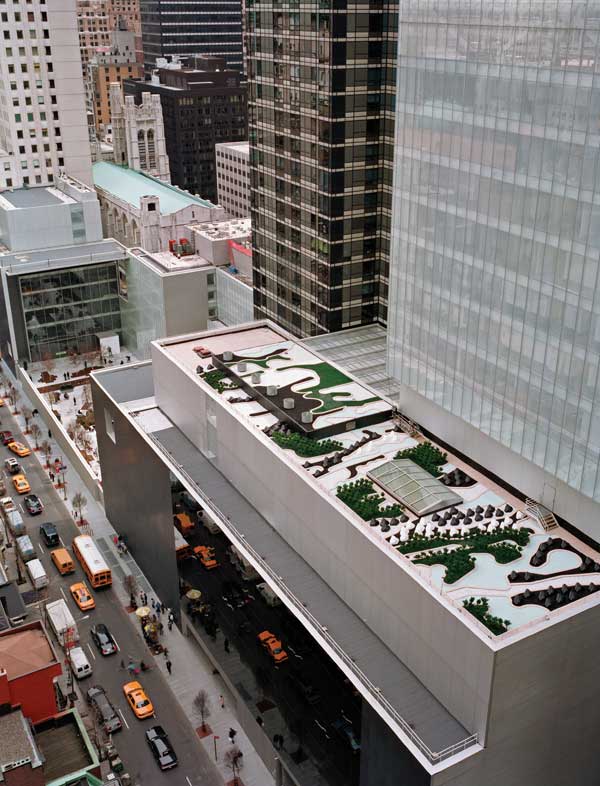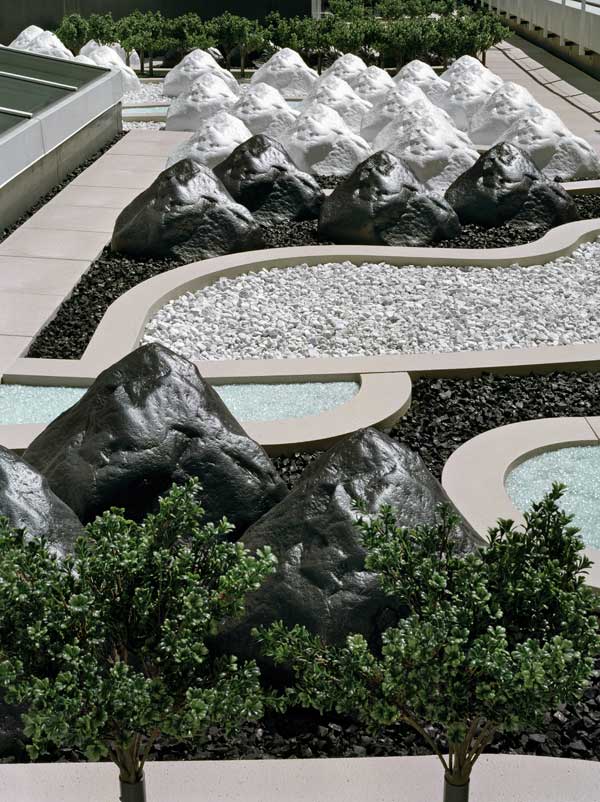News
Interview with Ken Smith, ASLA
.jpg) Ken Smith, ASLA
Ken Smith, ASLA
In the past few years, you began work on the immense 1,300 acre Orange Country Great Park, which also included a constructed 2.5 mile canyon. What are the main challenges and opportunities working in such a huge scale?
I think it’s easier to come up with the concepts and the design for something that big. But the principle challenge is actually keeping the project on track and figuring out how you start to deal with the political and financial issues in terms of orchestrating the construction and implementation. There are things that I would have liked to have seen much earlier in the implementation, things that are not possible because of regulatory issues. Figuring out how you actually orchestrate the park and get it implemented has turned out to be the biggest challenge.
One component of the Orange Country Great Park is a habitat park which will provide an "ecological backbone." How have you gone about reconstructing nature in this area of the great park? What have been your strategies for ecological development?
None of that has been built yet. The wildlife corridor is one of the early implementation items. It starts with an earth work of regrading and that hasn’t happened yet. Revegetation strategies are really developed by the ecologist, Steven Handel. He’s developed a series of interesting techniques that range from seeding acorns to planting small saplings. From what I’ve learned from him, weed control and weed abatement are actually the big issues in terms of native habitat restoration. The invasives can be a big problem. How you prepare the soil and control the invasives through the process are probably the biggest challenges.
I understand your recent MoMA Roof Garden Project was inspired in part by Japanese gardens. You and your team also conducted intensive review of the history of camouflage and those ideas influenced the design. What was the combination of ideas that inspired the MOMA Roof Garden?
It’s interesting to have something that operates on several levels because I think it gives it a complexity. I mean the garden is very graphic and you look at it and you kind of get it, but there are other things going on.
 ASLA 2009 Professional General Design Honor Award. MoMA Rooftop Garden / Peter Mauss / ESTO
ASLA 2009 Professional General Design Honor Award. MoMA Rooftop Garden / Peter Mauss / ESTOFrom Japanese gardens, I think it’s really not so much the classic rock garden as the gardens like the Golden Temple. That garden has these little islands with little pine trees that are kind of bonsai-ed. The trees on the island are smaller than in nature. They’re in this lake and the lake is not very big. But when you view those islands and those somewhat miniaturized trees against the real landscape behind, it makes the whole composition of the garden seem bigger because you’re reading as full size and they’re not. There's a kind of scale distortion I find to be really interesting. The little rocks and little shrubs at MoMA are really playing that kind of game of scale distortion more so than the kind of superficial rocks and gravel kind of a stereotypical Japanese garden.
Extensive research
was conducted before you selected the materials in the rooftop garden.
Some of the materials were recycled. Others were factory made. How has
technology changed how you select and use materials? How has technology
made sustainable use of materials easier?
The material pallet actually changed
through the process of the roof. Originally, for the headers that
outlined the shapes, I wanted to use Phillip Johnson brick, the kind of
tan/gray brick that Phillip Johnson always used and had used on his
additions to the museum in the ‘60s or ‘70s or whenever. He did that. I
thought that would be a great kind of contextural thing to use his
brick. And those curves and things were all designed to work with that
brick. But in the end, we couldn’t afford it. It was too expensive. The
laborers couldn’t figure out how to really control those shapes.
I was working with an artist, Brian Tolle.
Brian had been doing these interesting sculptures. He did this one
called the Witch Catcher, which was this kind of twisted fireplace thing
in City Hall Park in New York City, which I thought was fabulous. And I
was asking him about it. And he said, “Well, it’s not brick at all.
It’s made out of Styrofoam.” He, in fact, makes most of his stuff out of
Styrofoam and it’s milled in factories based on a computer model. And
then it’s treated with this kind of polycoat and painted. I also learned
that this is the same process used in historic preservation, a lot of
building preservation. The material used to replace the cornices for
historic buildings or other kind of architectural detail is actually
made out of this milled foam. It occurred to me that the milled foam
would be a way that I could get the control I wanted on those shapes. It
was lightweight. It was contemporary. It was a lot cheaper. So, that’s
how that material shift happened.
In the end, MoMA pre-purchased the black
and white rocks. But in the end, they never materialized because of the
construction process. I don’t know what happened to them. We had to find
black and white material. We did use white crushed marble stone but we
also used recycled black rubber chunks instead of black rocks because it
was a lot cheaper and lighter weight.

ASLA 2009 Professional General Design Honor Award. MoMA Rooftop Garden / Peter Mauss / ESTO
How do you think the understanding of green infrastructure has evolved over the years? Do you think it’s becoming a more mainstream concept?
The media and everybody is talking about this. Somewhere in the 20th century engineering became very specialized in terms of infrastructure. If you think of the Brooklyn Bridge, that’s a bridge that has multiple functions. It was originally a road for horses but also carried people, a great promenade. Somewhere in the middle of the 20th century, things became so specialized where, you know, a bridge was just for cars and it was very much a single-purpose piece of infrastructure. What we’re finding now is an emphasis on multiple uses of infrastructure.
All infrastructure has maybe a core use, like a bridge. But it also has other functions for people, and maybe it becomes a solar collector for generating electricity. We’re starting to see this kind of multiple use. That’s an interesting green notion.
How can cities best factor green infrastructure concepts into their calculations of how sustainable or resilient they are? How can green infrastructure ideas best be sold to urban policy makers?
I think the policymakers are probably on board. I mean my urban clients are all for these things. They may not know exactly how to do it. If the problem in the past was having a single profession make a single-purpose infrastructure, then I think the solution in the future is really a multidisciplinary team of people who bring multiple interests and multiple functions to that infrastructure.
We’re starting to see that more and more -- it’s engineers, architects, landscape architects, and ecologists working together on a piece of infrastructure. That's how you bring the green to the infrastructure and incorporate it into the infrastructure.
A recent article in Harvard Business Review argues that sustainability is the key driver of innovation. What form do you think sustainable design will take in the near future? Will biomimicry and biomimetic buildings and products take off?
Probably. I think they already are. They may not be as sophisticated now as it will be. But all of design is really biomimicry, right? I mean a shoe or a glove is biomimicry. Clothing is biomimicry in terms of moving and breathing.
We'll soon get to a much more sophisticated understanding of the biological function of structures and how they operate. Computer modeling allows us to do things that are way more sophisticated than before and can give us metrics on how something performs efficiently and effectively.
Ken Smith is the principal of Ken Smith Landscape Architecture and Ken Smith Workshop West.
Interview conducted by Jared Green.